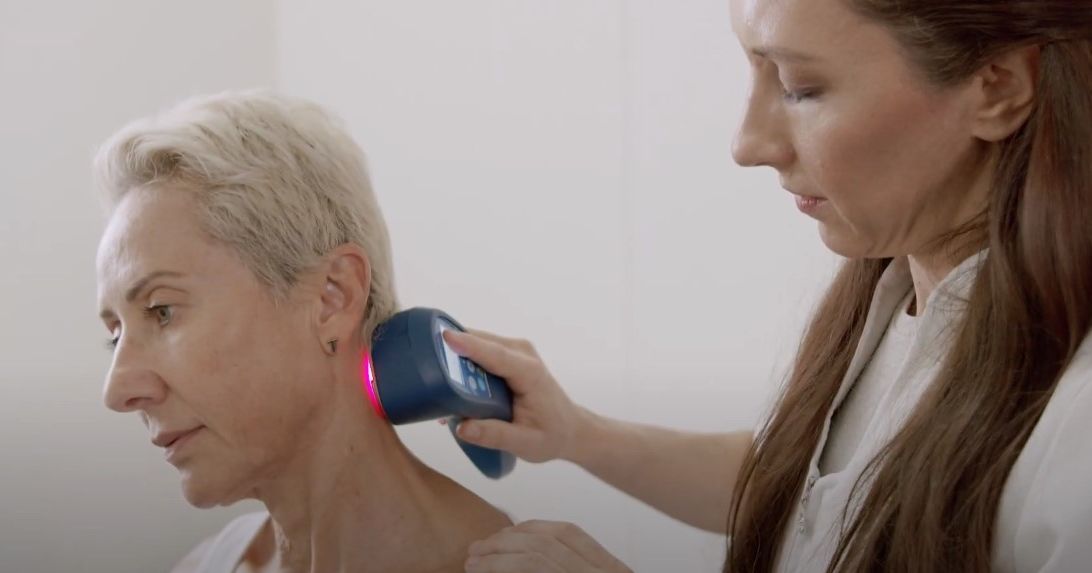Swimmers shoulder (shoulder pain) is an umbrella term for subsacromial impingement syndrome or tendinitis (inflammation of the tendons) of the shoulder muscles. The side and forward movement of the shoulder leads to a chronic irritation upon the shoulder bone and rotator cuff muscles on the coracoacromial arch. Generally swimmers shoulder is caused by overuse of the Glenohumeral joint and the muscles surrounding it and produces pain that’s often localised, however can spread up to the neck or down to the forearm.
Symptoms of swimmers shoulder include:
a) Decreased range of movement
b) Increased joint laxity/loosening
c) Tenderness over the shoulder joint
d) Localized pain is felt in the affected part of the shoulder
e) Shoulder strength is decreased
f) Pain may extend to the neck and/or down the arm in some cases
g) Pain worsens while resting on the affected shoulder
Diagnosis of swimmers shoulder can be in the form of x-rays and other imaging techniques to assess the changes in the alignment of the shoulder joint. Doctors may assess the condition through a physical examination of the shoulder joints ranges of motion by attempting different arm movements, looking for any abnormalities in particular a “lazy arm” where the elbow can’t be lifted.It could also be through a range of orthopaedic tests, for example; if a sub acromial impingement has occurred the following tests can be used:
a) Passive and active painful arc- Where the arm is lifted above the ear to the point of pain
b) Neer impingement test- shoulder is internally rotated and lifted from side to above the ear on a 45° angle.
c) Hawkins-kennedy test- the examiner elevates the arm to 90 degrees of abduction and forces the shoulder into internal rotation, grinding the cuff under the sub acromial arch.
Treatment for swimmers shoulder pain can be in the form of conservative care including rest, ice, heat, strapping and bracing as well as taking anti-inflammatory medications, exercise modification, stretching and surgical repair in severe cases. Management can also be in the form of Cold Laser Therapy. Cold Laser Therapy has shown proven results in its treatment of many musculoskeletal injuries including swimmers shoulder.
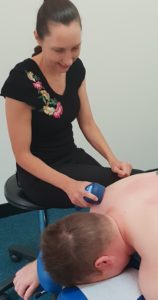
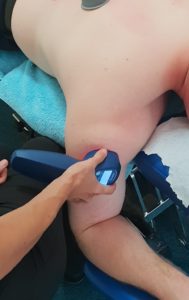
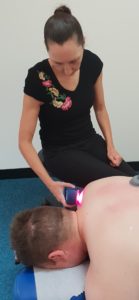
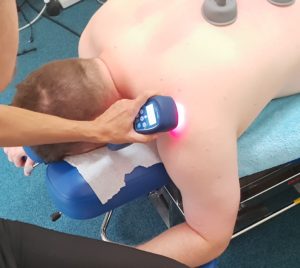
Cold Laser therapy, also known as low-level laser therapy utilises the most recent technology to target the deep underlying tissues and help regenerate the damaged tissues. Cold laser therapy woks by reducing the inflammation present around the affected area and providing it with oxygen and blood to give the tissue the best chance at regenerating. Treatment is non-invasive, meaning that it doesn’t require any surgical incisions and produces a laser that doesn’t generate any heat so that the patient isn’t exposed to any health risks. Treatment of swimmers shoulder via the Cold laser therapy generally lasts approximately 20 minutes in duration with the laser applied at different areas around the shoulder joint. Sessions of 2-3x per week are recommended to gain the maximum advantage from the treatment and the amount of sessions needed depend on the severity of the injury. They could range from 5-15 sessions depending on the amount of area that’s affected.
Swimmer’s shoulder is a common overuse injury seen in athletes who repetitively engage the same joint—especially in swimmers who use their shoulders daily under high strain. While it can be painful and limiting, it’s often treatable in a short time with the right care.
At Lakeside Laser in Gnangara, WA 6077, Dr Linda Schiller specialises in Cold Laser Therapy for musculoskeletal injuries like swimmer’s shoulder. With multiple laser emitters on site, we can target affected areas efficiently and accelerate the healing process.
We’re just minutes from Joondalup and regularly welcome visitors from across Perth’s northern suburbs.
To discuss your condition or book an appointment, feel free to contact Dr Linda Schiller on 0468 429 111 or visit our website at www.lakesidelaser.com.au and use the ‘Book Now’ tab. We look forward to supporting your recovery.


